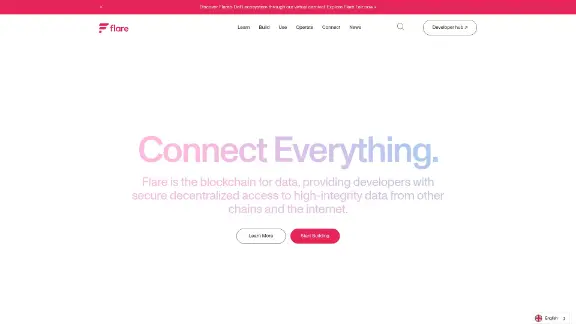Flare (FLR)
Flare is a Layer 1 blockchain that focuses on enhancing data accessibility and management by utilizing the Ethereum Virtual Machine (EVM) for smart contract execution. Its primary objective is to decentralize data, ensuring universal access without centralized control.
Overview
Flare was founded in 2019 to improve data accessibility for blockchain developers. The platform is maintained by infrastructure providers who act as validators and data sources, supporting two essential native oracles, the Flare Time-Series Oracle (FTSO) and the State Connector. These oracles simplify data access for developers on the Flare network cost-effectively. Additionally, Flare Labs has developed LayerCake, a decentralized bridging and cross-network composability protocol with in-transit insurance.

| Ticker | FLR |
| Category | Smart Contract Platform |
| Website | https://flare.network/ |
| @FlareNetworks | |
| Telegram | FlareNetwork |
| https://www.reddit.com/r/FlareNetworks |
Flare protocols
The Flare Time-Series Oracle (FTSO)
The Flare Time-Series Oracle (FTSO) provides continuous, decentralized, and secure estimations for various data types. Independent data providers gather data from multiple sources, and the FTSO calculates a final estimate based on weighted inputs. Initially created for cryptocurrency price pairs, the FTSO now supports all data types. Data providers are rewarded for valuable contributions, and the data estimates are published on-chain for use.
State Connector
The State Connector is a crucial element of the Flare network that securely accesses verifiable data from external chains and the internet. It functions as a smart contract, allowing users to query this type of data. The State Connector operates securely and relies on independent attestation providers to retrieve and validate information, which is then made available on the network through a consensus process.
LayerCake
LayerCake, developed by Flare Labs, is a decentralized bridging and cross-network composability protocol with in-transit insurance. It focuses on enhancing security, speed, scalability, and functionality for bridging across various smart contract networks, facilitating streamlined automated actions within the bridging process.
Flare (FLR) token
The Flare token (FLR), formerly known as Spark, is an inflationary token within the Flare ecosystem. It is used for smart contracts, transaction fees, and generating FLR tokens via the FTSO. The token aims to maintain consistent usage costs, supporting various applications such as DeFi, NFTs, the metaverse, and gaming.
Songbird (SGB) token
Songbird serves as Flare's canary network, providing a functional blockchain environment for testing new features before deploying them to the main network. It offers developers a live testing environment and plays a role in the network's governance. The SGB token, distributed to all FLR recipients, contributes to governance decisions related to additional chains, pricing mechanisms, and FAssets within the FTSO and FAsset protocols.
Flare Beta
The Token Distribution Event and Beta Phase Launch took place on January 9, 2023. During this beta phase, Flare implemented a dual-validation system involving professional infrastructure providers and validators from FTSO participants. The phase is designed to transition validation power from infrastructure partners to the FTSO group, ultimately leading to exclusive FTSO validator operation. Validator rewards are distributed between infrastructure partner validators and FTSO validators, with Flare Foundation validators not receiving rewards.
$FLR token burn
On October 13, 2023, Flare announced the burning of 2.1 billion $FLR tokens. This decision followed an airdrop to XRP holders from a network snapshot in December 2020. The burn aims to enhance the ecosystem's development and reduce dilution, incentivizing new users to join the network.
Team
- Hugo Philion: Co-Founder & CEO
- Sean Rowan: Co-Founder & Chief Product Officer
- Dr. Naïri Usher: Co-Founder & Chief Scientist
- Tim Bukher: Chief Operating Officer & CLO
- Jaime Abromovitz: Chief Growth Officer
- Amaan Jalwa: Chief Financial Officer
- Gabe Bassin: Chief Investment Officer
- Josh Edwards: VP Engineering
